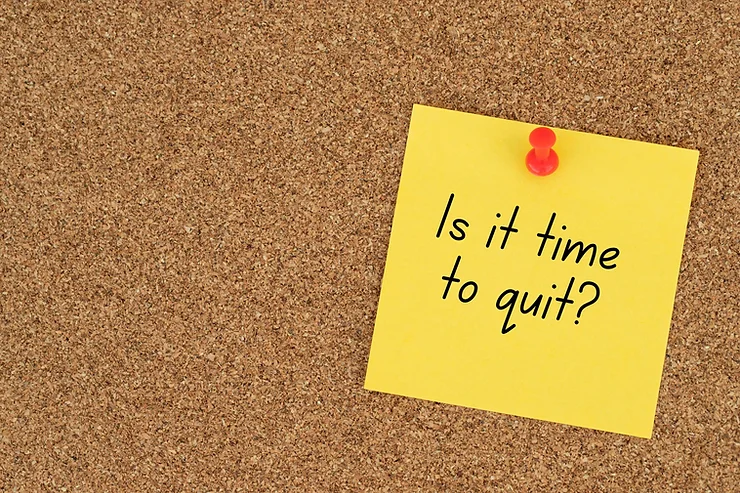One of the most important qualities of a leader is resilience – the ability to deal with the challenges and stresses of the workplace and bounce back from setbacks.
It takes grit to work in the face of adversity, overcome obstacles and help teams navigate through uncertainty. There may be times where you find yourself stuck in a situation, pushing on, trying to persevere and at the same time feeling unhappy and unfulfilled.
Does this sound familiar? Have you ever considered that choosing to quit might actually be more of a strategic move to get you to a better outcome?
Your initial response to the idea of quitting may well go against all your instincts as a leader. You may fear others think you are a failure by giving up. There are all sorts of rationalisations our minds go through to convince ourselves something is worth carrying on with.
Our decision-making ability is impacted by our cognitive biases. Getting a better understanding of your own biases will help you work out whether you are persevering with things that are not productive and worthwhile. Here are a few biases to consider:
Sunk cost fallacy is continuing to invest in something you’ve already put lots of time and resources into, feeling it would have all been for nothing if we quit. Stopping would mean admitting that whatever resources have been invested would go to waste.
Loss aversion is when we focus more on what we might lose than what we might gain – the more time we commit to something, the more loss we feel when walking away. We are less tolerant of the anticipation of something bad that might come from something new and more tolerant of bad outcomes that might come from something we are already doing.
Status quo bias is about preferring things to remain the same, wanting to be on the safe side, as with change comes uncertainty and with that the perception of risk or loss.
Ambiguity aversion is choosing known risks over unknown risks, better the devil you know. What if I switch to something else and risk being even unhappier? This could lead to regret aversion where the anticipation of regret over making a wrong choice steers you away from choosing to quit.
If you’re grappling with a grit or quit dilemma, start by identifying how long you can endure the situation you’re in. Annie Duke, author in cognitive-behavioural decision science, advocates setting kill criteria. Define what success is going to look like – identify the indicators that things are getting better and the signals that things are not going well. Then get some help! Find a coach to help you along, preferably someone neutral who’s not emotionally invested in what you are doing. A good coach will tell you the truth, help you with rational thinking and hold you to account against your kill criteria.
Still not convinced, then ask yourself the following:
-
Do I still enjoy what I am doing?
-
Am I improving or learning from what I am doing?
-
Is what I am doing meaningful and worthwhile?
-
Is what I am doing having a positive impact on myself or others?
If the answer to the above is “no”, maybe it’s time you considered quitting – whether that’s a project, new product initiative or even your job. Don’t leave it until you get the certainty that there’s no other choice!





